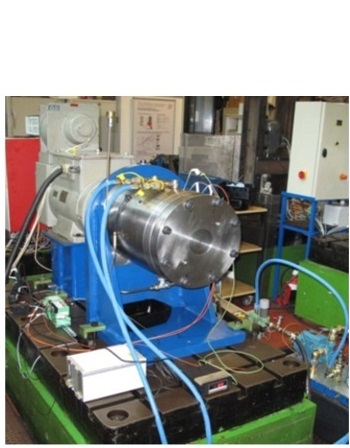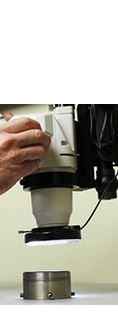Research & Development
______________________________________________________________________________________TISTAM____
Outstanding quality is the top priority at TISTAM. Our products are designed for user-friendly installation, optimal functionality and long service life. Over 30 years our R&D activities, advanced quality management system, in-house test facilities and in-depth engineering expertise ensure that our seals meet the most demanding customer expectations. Starting right back in the development phase, our employees continually verify the quality of our products, and we carry out systematic inspection and testing to guarantee that customers are getting top quality.
More than 5% of annual sales revenue has been reinvested in R&D over several decades. This has led to what is almost certainly the most advanced range of sealing technology available globally.
Our Research and Development (R&D) serves to bolster our competencies by offering its expertise and services to the world. TISTAM has become a leading, innovative provider to industries, fulfilling the roles of specialist, solving the end-users engineering problems via inventive and innovative approaches.

As a technology driven company, TISTAM will be constantly applying the latest technology in our operation, in order to continuously provide high standard of services to our clients.
TISTAM
►Will continue to provide the premium service and professionalism, stressing on the work accountability and total customer satisfaction.
►Is commited to continuously innovate and improve the products and services.
►Focuses in providing innovative, high quality precision products and services towards end-users, in accordance to (API682-ISO21049) Standard.

_____________________________________________________________________________________TISTAM____
Mechanical Seal Quality Tester.
The test of a mechanical seal depends on its design and purpose. Nevertheless several factors are important for every seal test. The rotational speed of the shaft or axel, the pressure, the temperature and the nature of the medium. Thus a test & measurement system must be very flexible and versatile.
The custom-designed test-rig enables an exact replication of the region around the mechanical shaft seal and an exact simulation of the on-site operation conditions. Absolute accordance of measurement values of the test rig comparered to on-site measurements at the plant.
A component is regarded as being impervious in the physical sense if a previously specified test method of a certain sensitivity commensurate with the purpose is unable to detect the passing of a suitable test medium from one chamber into another chamber or into the atmosphere. Frequently used methods are the liquid leak test, the bubble leak test, and the gas leak test.
API 682 - ISO 21049 is the first official and approved specification to describe both, qualification testing and prototype testing for mechanical seals. The seal series specified in API 682 - ISO 21049 can qualify for defined areas of application in refineries by passing these tests. In conjunction with the framework conditions, the qualification test guarantees that the end-user is supplied with mechanical seal systems of the highest reliability while providing a basis for mechanical seal optimization and further development.
Qualification Testing:
To deliver sustained reliability performance, we test our products to their limits. Our test rigs can be programmed to validate seal designs against pre-determined criteria, including:
Shaft speeds: Up to 45,000rpm.
Challenging temperatures: 280°C/536°F.
High pressures: 350 bar/5,000psi.
Nobody does more to improve the quality of their products or enhance the customer experience.

_____________________________________________________________________________________TISTAM____
Research on Performance of Stern Shaft Mechanical Seal.
The friction of the seal faces is the most important phenomenon in working process of mechanical seals. The frictional characteristic of the end faces of mechanical seals is a key factor that can decide their operating life and sealing performance. The friction mechanism of the end faces of mechanical seals was discussed at a microscopic point of view. The operating characteristic in different friction regimes of mechanical seals, such as dry friction, fluid friction, boundary friction and mixed friction, was analyzed. The methods for judging friction regimes of the end faces of mechanical seals were introduced, such as friction factor method, duty parameter method, Mayer method and relative film thickness method.
Reasonable assumptions and boundary conditions, the application of mechanical seal ring structure analysis and thermal-structural coupling analysis, research on the temperature field and the pressure field distribution of the water flim between moving and the stationary ring . Comparing the change of the maximum temperature and the water film bearing capacity though different inlet velocity and different speed under, known as the fluid inlet speed increases, the maximum temperature of the sealing water film gradually decreased, the bearing capacity gradually increased; as the stern shaft speed increases, the sealing water film maximum temperature gradually reduced, and the bearing capacity of the sealing water film is gradually increased. In this paper, the research to maintain the good performance of the stern shaft mechanical seal has important significance and role.
